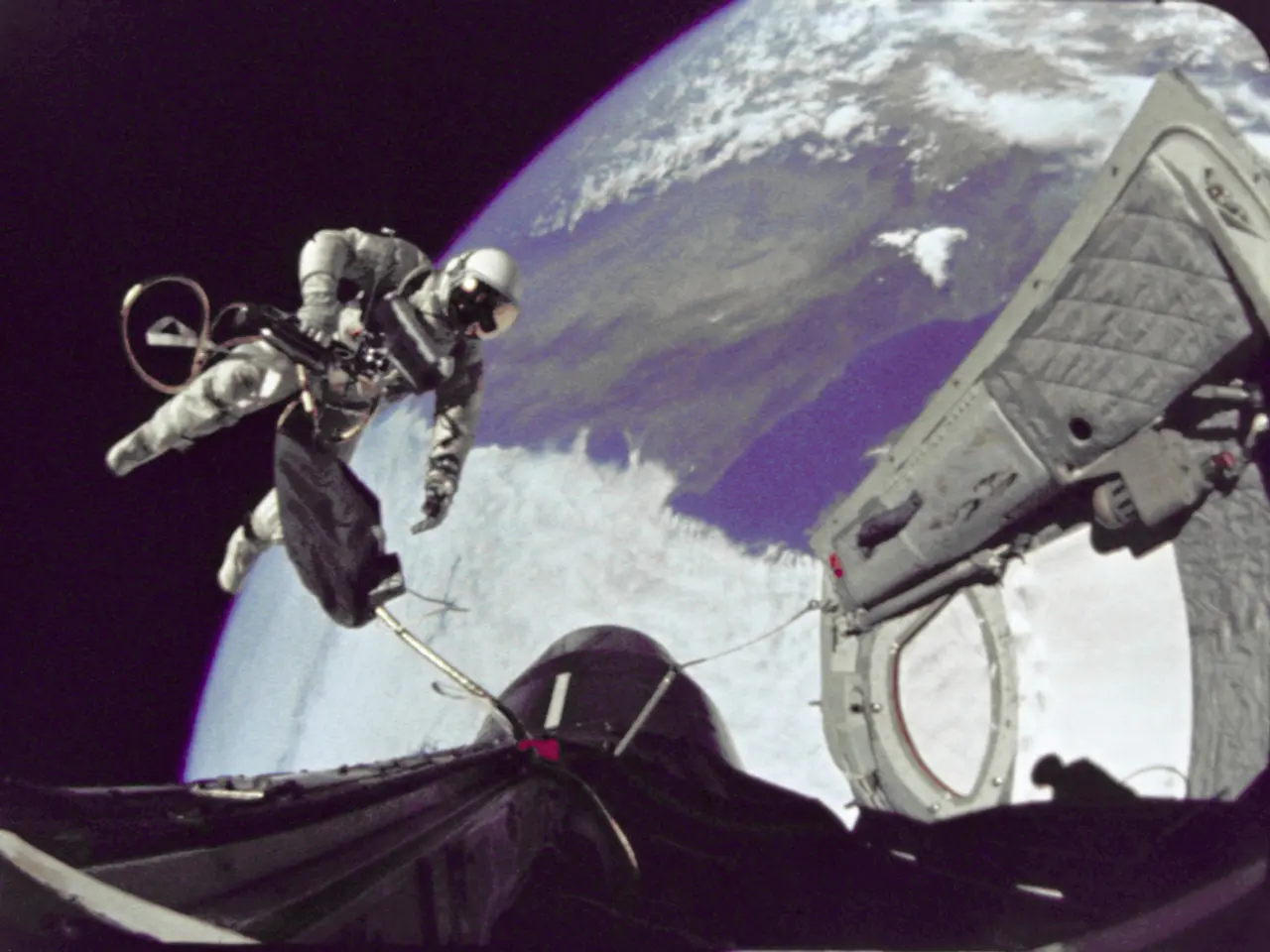Exploring Interstellar Snoozing: The case for hibernation in long-term space journeys to Mars and beyond
The European Space Agency (ESA) and NASA, among other space agencies, are exploring the potential of human hibernation for long-duration space travel, such as missions to Mars. This innovative approach aims to lower the body's metabolic activity, including heart rate and body temperature, to conserve resources during space travel.
Current research is primarily focused on uncovering the genetic mechanisms that control hibernation in humans and understanding human cold tolerance and metabolism. A significant breakthrough has been the discovery of dormant "hibernation genes" in humans. Studies led by the University of Utah have identified regulatory DNA regions near the fat mass and obesity-associated (FTO) gene cluster that hibernating animals use to control fat storage, metabolism, body temperature, and behavior during hibernation. Although humans have this genetic framework, the crucial difference lies in gene regulation.
Experiments introducing hibernator-specific regulatory DNA regions into mice have demonstrated the functional potential of these genetic elements, altering their metabolism and weight control. However, the application to long-duration spaceflight remains highly speculative, and actual induction of hibernation-like states in humans has not yet been achieved.
NASA and other organizations are improving their understanding of sleep and fatigue in space, but these efforts focus on sleep management rather than full hibernation. One of the challenges in developing hibernation technology is finding the right drug combination to temporarily lower the body's thermal set point.
Researchers in Europe and the US are studying the concept of torpor or synthetic hibernation for astronauts during space travel. If successful, hibernation could revolutionize space travel by cutting down the need for food, water, oxygen, and space. For instance, astronauts would be placed into torpor for most of the journey, allowing them to wake up as they near their destination.
The process of inducing human torpor would likely involve several stages, including preparation, induction, maintenance, and reawakening. However, scientists still do not know how to enable humans to enter the same state as animals. More investment is needed to boost research and the development of technology that could help humans achieve a state of hibernation.
The timeline to practical human hibernation in space is unclear; current progress is in fundamental research rather than applied human hibernation technology. If realized, hibernation could also have significant benefits for health care on Earth, with space travel being a secondary consideration.
As space agencies work towards sending humans back to the Moon and eventually to the surface of Mars, studies are continuing on how extended deep space missions would affect human psychology and physiology. SpaceX, for example, is developing its Starship rocket with the aim of sending crewed missions to Mars, or even deeper into space. If successful, placing astronauts into a state of hibernation could help them cope with the challenges of long space missions.
Interestingly, genetic research suggests that hibernation is not controlled by a single gene, but a complex set of gene expressions triggered under specific environmental conditions. This could help protect crew members from radiation and the effects of microgravity. Dr Dominique Moser, a biologist at Ludwig Maximilian University of Munich, suggests that humans may have had the ability to enter a state of torpor in the past, based on evidence from bone findings in a cave in Atapuerca, Spain, half a million years ago.
In conclusion, while research is advancing on the genetics and physiology that could underpin human hibernation, actual human hibernation for space travel is still theoretical and likely years or decades away from realization. However, the potential benefits for space travel and health care make it a long-term goal worth pursuing.
- The European Space Agency (ESA) and NASA, among other space agencies, are exploring the potential of human hibernation for long-duration space travel, such as missions to Mars, based on the genetic mechanisms that control hibernation in humans.
- Researchers in Europe and the US are studying the concept of torpor or synthetic hibernation for astronauts during space travel, with the goal of revolutionizing space travel by cutting down the need for resources.
- Studies led by the University of Utah have identified regulatory DNA regions in humans that hibernating animals use to control metabolism, body temperature, and behavior during hibernation, but the application to long-duration spaceflight remains highly speculative.
- SpaceX is developing its Starship rocket with the aim of sending crewed missions to Mars or even deeper into space, and placing astronauts into a state of hibernation could help them cope with the challenges of long space missions.
- The process of inducing human torpor would likely involve several stages, including preparation, induction, maintenance, and reawakening, and more investment is needed to boost research and the development of technology that could help humans achieve a state of hibernation.




